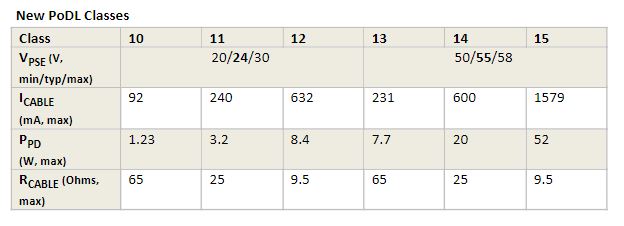The Latest Updates to IEEE Standards and TIA Standards
No matter what type of cabling project you’re working on, standards are there to guide you through the process and ensure uniformity, performance, compatibility and safety.
We’ve pared down recent changes to those that will impact integrators, installers and end-users. Read on to learn more about the latest updates to IEEE standards and TIA standards, as well as a new edition of the National Electrical Code (NEC).
The Latest in Ethernet Application IEEE Standards
When it comes to advances in Ethernet, there’s been lots of talk about Single Pair Ethernet (SPE) lately.
As its name suggests, SPE cabling features only one twisted-pair to transmit data instead of the four twisted-pairs that are standard in most Ethernet cabling. Because it uses only two conductors, the cable is lightweight, cost effective and easy to install.
Single Pair Ethernet can be a good fit in industrial (OT) and smart building (IT) applications. In fact, it breaks through the IT/OT divide by enabling the delivery of power and data over a longer reach while offering lower data speeds and centralized power.
A new task force was created to consider the next phase of long-reach single pair Ethernet. The IEEE P802.3dg 100 Mb/s Long-Reach Single Pair Ethernet Task Force is solidifying requirements for building automation system applications for 100 Mb/s over 500 m. This will help address the demand for long reach, low latency and low-voltage signals in noisy, impulsive environments. We anticipate more IEEE standards being created in the future that directly relate to smart buildings, and this is a good example.
Another IEEE task force—the IEEE 802.3bu Single Pair Power over Data Lines (PoDL) Task Force—was created to specify a power distribution technique for use over a single twisted-pair link segment. Power over data line (PoDL) extends the benefits of Power over Ethernet (PoE) while using Single Pair Ethernet instead of four twisted-pairs.
This task force created six new PoDL classes—Classes 10-15—to define operating voltage and power level for OT. The Ethernet Alliance is considering calling these classes SPoE, or Single Pair Power over Ethernet.
SPoE will classify end devices prior to power application, can measure cable resistance, offers 24V and 55V ranges as demanded by OT systems, and can deliver power up to 1 km with increased power deliver at shorter distances.
The Latest in Copper and Fiber TIA Standards
When it comes to cabling standards for Single Pair Ethernet, several TIA standards are being updated to support this network implementation, including:
- ANSI/TIA-568.5-1 Balanced Single Twisted-Pair Telecommunications Cabling and Components Standard
- ANSI/TIA-568.7 Balanced Single Twisted-Pair Communications Cabling and Components Standard for Industrial
- TIA-TSB-184-A-2 Guidelines for Supporting Power Delivery Over Balanced Twisted-Pair Cabling Addendum 2: Power Delivery Over Balanced Single Twisted-Pair Cabling
- ANSI/TIA-1005-B Telecommunications Infrastructure Standard for Industrial Premises
- ANSI/TIA 568.1-E-1 Commercial Building Telecommunications Infrastructure Standard
- TIA-4966 Telecommunications Infrastructure Standard for Educational Facilities
Work is also set to begin soon on a complete overhaul of the ANSI/TIA-568.2 Commercial Building Telecommunications Cabling Standard. We’ll keep you updated as progress is made.
Next, we turn to updates in fiber cabling and components. ANSI/TIA-568.3 Optical Fiber Cabling and Components Standard is undergoing a revision that will incorporate a Type “U” (Universal) polarity to simplify fiber paths and gender conflicts in multi-manufacturer fiber environments.
New Edition of the National Electrical Code
Finally, there have been recent changes to the NEC as well. The 2023 edition, released in September 2022, introduces a new type of power circuit—one that could change the way buildings and technology are powered in the future.
Class 4, covered in NEC New Article 726, standardizes an improved format of electricity. Class 4 has many names: fault-managed power systems, packet energy transfer (PET), Digital Electricity™ (DE), pulsed power or smart transfer systems.
Class 4 circuits provide the convenience and safety of low-voltage power, just like PoE; however, Class 4 also offers close to 20 times the power of PoE across hundreds of meters, offering a safe alternative to AC power. Learn more about our involvement in the inclusion of Class 4 in the NEC.
If you have questions about updates to IEEE standards or TIA standards, or you need more detail or clarification, I’m happy to answer your questions.
Related Links:
Class 4 Systems Change How Technology is Powered
Why We Choose to Get Involved in the Creation of Cable Standards

